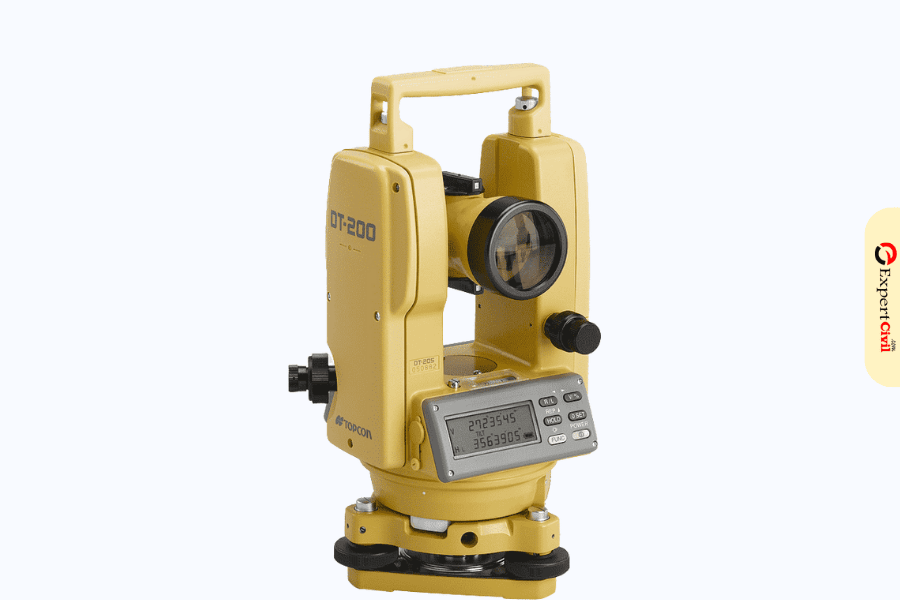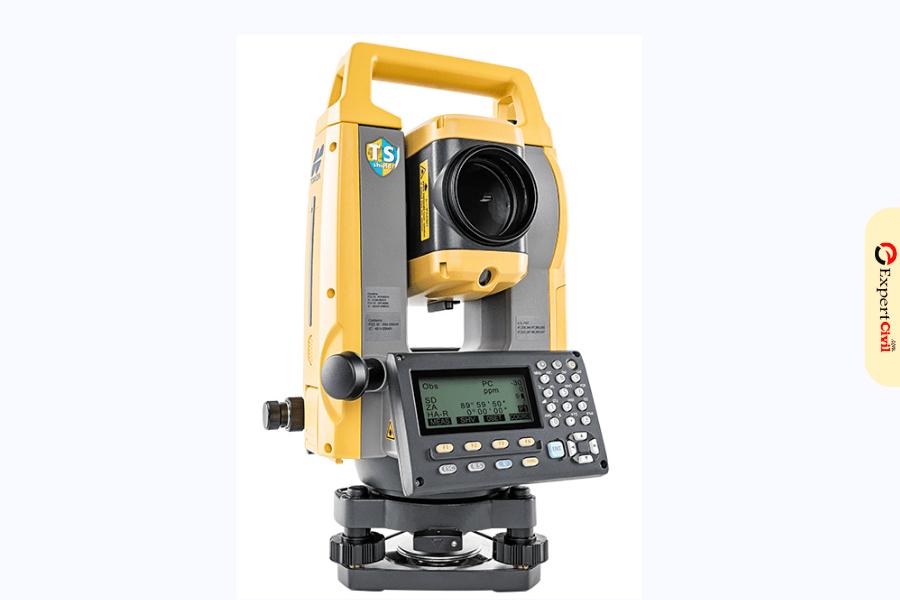What is theodolite?
A theodolite is an accuracy instrument for estimating points in the horizontal and vertical planes. Its conventional use has been for land survey. It is additionally utilized broadly for building and foundation development and a few specific applications. For instance, meteorology and rocket launching.

It comprises a mounted moveable telescope so that it can pivot around the level and vertical axis, providing proper angular readouts. Theodolites demonstrate the direction of the telescope and relate the primary guide located through the telescope toward ensuring sightings of different focuses from a similar theodolite position.
These points can be estimated with accuracy down to microradians or seconds of a circular segment. From these readings, a plan can be drawn, or items can be situated as per a current arrangement. The cutting-edge theodolite has developed into what is known as a total station where points and distances are estimated electronically and are transferred to a computer to work further.
Types of Theodolite
There are two types of theodolites:
- Transit Theodolite
- Non-Transit Theodolite
In a transit theodolite, the telescope is short enough to rotate about the trunnion axis, turning the telescope through the vertical plane through the peak.
In a non-transit theodolite, the telescope’s vertical rotation is restricted to a limited segment.
Also read: All you need to know about Surveying
Advantages of Theodolite
Some advantages of a theodolite are as follows:
- It is an economical instrument.
- It is an entirely versatile instrument and can be conveyed to any place without putting in much effort.
- It is for the most part simpler to use than transit or the level and compass. This makes it ideal for limited scope looking over projects like building locales, ranches, etc.
- Its essential parts are straightforward and can be utilized easily by anybody who knows the nuts and bolts of studying instruments overall.
- Horizontal circles can be right zeroed or set to some other value.
- Horizontal circle readings can be taken either to the left or right of zero.
- Repeat readings are pointless.
Disadvantages of theodolite
Some of the major disadvantages are:
- It is given a bubble level, which makes it challenging to utilize.
- It gives a rough reading.
- It can’t be used when the object to be estimated is short or far away or when the sight point is fixed in one spot.
- It must be held parallel with a horizontal level line for exact estimations, and that implies that it should be levelled out before removing a point from it.
- It can’t be utilized for estimating vertical points in different stations.
- It isn’t quite as exact as other surveying instruments like the transit and the other theodolites.
Also read: Complete Guide On Traverse surveying
What is Total Station?
A total station (TS) or total station theodolite (TST) is an electronic/optical instrument utilized for looking over and building development. It is an electronic travel theodolite incorporated with electronic distance measurement (EDM). It is used to quantify both vertical and horizontal points and the incline distance from the instrument to a specific point, and an on-board PC to gather some information and perform triangulation computations to do the work.

Mechanical or Robotic total stations permit the administrator to control the instrument from a distance through the controller. In principle, this eliminates the requirement for an associate staff part as the administrator holds the retro reflector and controls the absolute station from the noticed point.
Generally, while doing a survey, an associate staff is required in many cases while the study is being done in occupied regions, for example, on a public carriageway or building site. This is to keep individuals from disturbing the setting of the complete station as they walk past, which would necessitate resetting the tripod and restoring a benchmark. Moreover, an associate surveyor minimizes the chances of burglary, which is entirely expected because of the worth of the instrument.
Advantages of Total station
- Fieldwork is done exceptionally quick.
- Precision of estimation is high.
- Manual mistakes engaged with reading and recording are wiped out.
- Computation of directions is exceptionally quick and exact. Indeed, even adjustments for temperature and pressure are consequently made.
- PCs can be utilized for map making and plotting contours and cross-sections. Contours and scales can be changed in a matter of moments.
- It supports nearby language
- No recording mistakes
- It shows the graphical perspectives on grounds and plots
- Information can be saved and moved to computers.
- Computerization of old maps
- All in one performing and multiple tasking instrument.
Disadvantages of Total station
- The surveyor can’t see at the hour of working since it disturbs his work.
- To plan out the work it’s expected to return to the workplace and perform drawings with specific programming.
- The instrument isn’t modest and is over the top expensive.
- Complete climate Surveying requires extra staff as it isn’t easy to work with this instrument.
Difference between Theodolite and Total station
| Theodolite | Total Station |
| Used for measurement of only horizontal and Vertical angles | Used for measurements of both angles and distances. |
| It is economical | It is highly expensive |
| It has been used since the 16th century | It has been from recent years |
| It does not take wind and temperature considerations. | It takes wind and temperature considerations. |
| Data cannot be transferred to a PC. | Data can be transferred to a PC. |
| Calculations of Coordinates are slow | Calculations of Coordinates are very fast |
| Old maps cannot be computerized | Old maps can be computerized. |
| Fieldwork takes time. | Fieldwork can be carried out very fast. |
| Work can be completed on-site. | To perform work completely one needs to go to the office. |
| Computers cannot be employed for map making. | Computers can be employed for map making. |
Also read: Types of Levelling Instruments used in surveying


Leave a comment